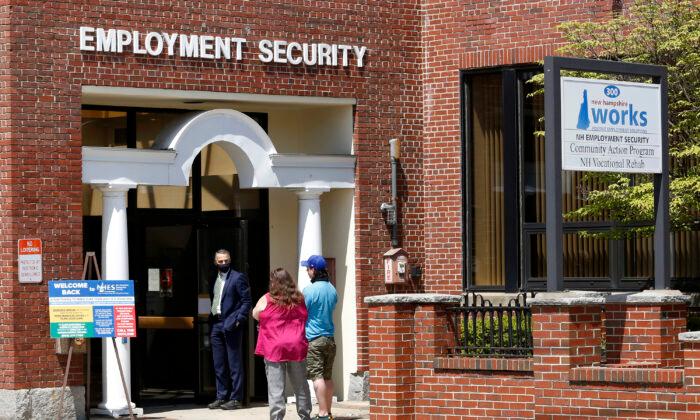The continued growth in the U.S. labor market is relief for some analysts after U.S. gross domestic product (GDP) contracted in the first half of 2022, after initial fears of a recession when second-quarter results appeared during the summer.
Initial jobless claims unexpectedly fell by 6,000, to 222,000, in the week ended Sept. 3, declining from the previous week’s revised figure of 228,000.
Economists interviewed by Reuters had expected jobless claims to rise, to 240,000, from the initially reported 232,000 for the previous week.
Overall, first-time claims fell to their lowest level since the week ended May 28, when it hit 202,000.
The four-week average also declined by 7,500, to 233,000, from the previous week’s revised figures.
Massachusetts, Oklahoma, and Pennsylvania saw the biggest rise in initial claims last week, while New York, Michigan, and Connecticut saw the biggest drop in claims.
However, in what appears to be a sharp divergence, continuing jobless claims jumped by 36,000, to 1.473 million, in the week ended Aug. 27, to its highest level since early April, according to the Bureau of Labor Statistics.
The Department of Labor, in its last week’s monthly jobs report, reported that employers hired more workers than expected in August, but job growth does seem to be showing signs of slowing.
The economy only added 315,000 jobs in August, the second-lowest monthly total in 16 months, after gaining 526,000 jobs in July.
There are still two vacancies for every unemployed person, which is still good news for workers looking for employment.
The unemployment rate last month increased to 3.7 percent from 3.5 percent in July, which was positive news for the Federal Reserve, which seeks a higher rate.
The Fed Determined to Stay the Course
However, the news regarding jobless claims will only increase the chance for the Fed to push for another aggressive rate hike later this month in its attempt to slow down the economy and control high inflation.The latest news on unemployment has caused the markets to worry about a third massive increase in the interest rates, as a strong labor market will only encourage the Fed to stay the course on its monetary tightening policy.
The Fed has raised interest rates by 225 basis points since March, and investors expect it to boost rates by another 75 basis points by the end of the next policy meeting on Sept. 20–21.
Fed Chairman Jerome Powell struck a hawkish tone in an interview with the Cato Institute on Sept. 8, after warning, on Aug. 26, that the Fed’s effort to fight inflation would “bring some pain to households and businesses.”
Some major employers, including Ford Motor and Walmart, have announced job cuts in recent weeks.
There are still few signs of any major widespread layoffs for now, as more people join the workforce and ease months of labor shortages.
Initial claims still remain well below the range of 270,000–300,000 that would normally signal a slowdown in the U.S. labor market.






Friends Read Free